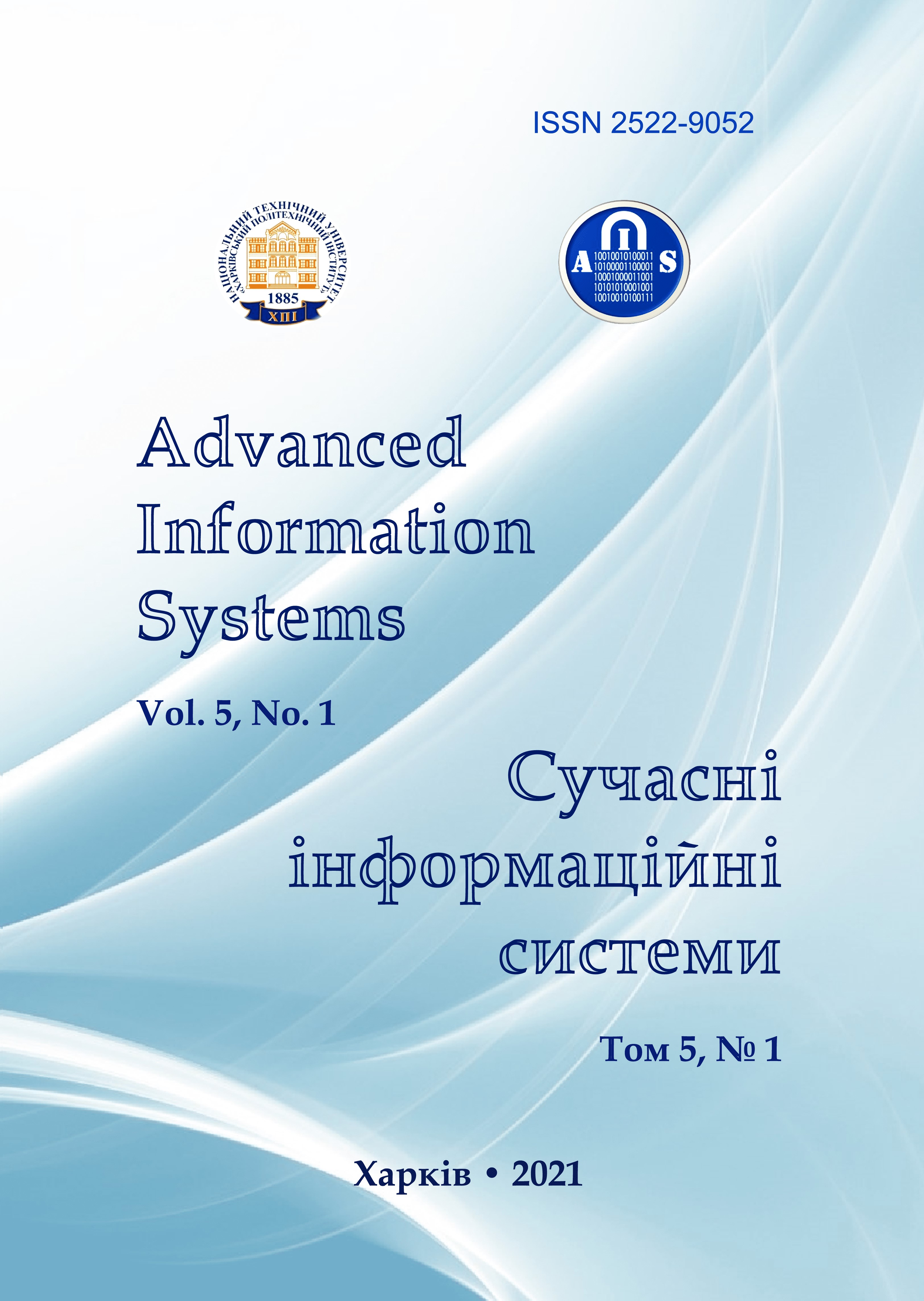APPLICATION OF THE CORRELATION ANALYSIS MATHEMATICAL APPARATUS FOR DETERMINATION THE LEAD–ACID BATTERIES MANAGEMENT AND STATUS CONTROL MINIMUM DIAGNOSIS
Main Article Content
Abstract
The subject matter of the article is the lead–acid batteries carrier and management. The goal of the study is the development of a methodology for assessing the lead–acid batteries’ parameters and to provide recommendations for their long–term management and carrier in the army operation. The tasks to be solved are: on the basis of the lead–acid batteries operation experience to define a set of diagnostic parameters on which it is possible to draw a conclusion about the technical state of a battery and change of its electric, operational and design properties; to determine the correlations between the properties of the battery and make their assessment based on the established criteria; to build a diagnostic graph–model of causal relationships of a battery’s parameters in the form of a correlation galaxy; to justify the lead–acid batteries carrier and management minimum diagnosis which can be carried out during their life cycle management та status control under the lack of time. General scientific and special methods of scientific knowledge are used. The following results were obtained: The set of diagnostic parameters to assess the battery technical state was determinated. Statistical data processing using the mathematical apparatus of correlation analysis was done. The diagnostic graph model of a lead–acid battery in the form of a correlation galaxy was constructed. The lead–acid batteries carrier and management minimum diagnosis during the life cycle was determined. Conclusions. Analysis of the experience of the lead–acid batteries operation determines a set of diagnostic parameters, which can be used to draw a conclusion about the technical state of a battery and change of its electric, operational and design properties. As generalized diagnostic parameters of the battery technical state can be considered the State of Health and the State of charge. Statistical data processing using the mathematical apparatus of correlation analysis allows to determine the causal and dependencies between the battery’s parameters and make their assessment based on the established criteria. Presentation of generalized results in the form of a correlation galaxy makes it possible to build a diagnostic graph–model of battery in the form of a correlation galaxy. Control of the SoC and SoH of the lead–acid battery will ensure the monitoring of the remaining charge, as well as the issuance of a warning about the need to replace the battery. A promising direction in the development of battery operation can be considered the development of battery–powered trackers – software and hardware devices capable of caring for battery care and battery management.
Article Details
References
Gumelev, V.Yu. and Kochurov, A.A. (2013), “Factors Affecting Battery Life”, Issledovaniya v oblasti yestestvennykh nauk, No. 5, available at: http://science.snauka.ru/2013/05/4946.
Yurov, Yu.Yu., Postnikov, A.A. and Gumelev, V.Yu. (2015), “Brief evaluation of methods for diagnosing lead–acid storage batteries”, Sovremennaya tekhnika i tekhnologii, No. 12, available at: http://technology.snauka.ru/2015/12/8775.
Kochurov, A.A., Shevchenko, N.P. and Gumelev, V. Yu. (2009), Teoreticheskiye osnovy resheniya problemy uvelicheniya srokov sluzhby akkumulyatornykh batarey pri khranenii i povysheniya effektivnosti sposobov ikh vosstanovleniya [Theoretical foundations for solving the problem of increasing the service life of storage batteries and improving the efficiency of methods for their recovery], RVAI, Ryazan, RU.
Patrick T., Moseley, Jurgen, Garche, C.D. Parker, and D.A.J. Rand (2004), Valve–Regulated Lead–Acid Batteries, Elsevier B. V., NL, Amsterdam.
Aleshkin, A.A. (2013), “Method of on–line diagnostics of the available capacity of lead–acid accumulators (batteries)”, Elektrokhimicheskaya energetika, No. 1, pp. 46–53.
Postnikov, A.A., Yurov, Yu.Yu. and Gumelev, V.Yu. (2018), “Evaluation and selection of parameters for monitoring the technical condition of batteries”, Nauchnyy rezerv, No. 1(1), pp. 54–59.
(2020), Battery Council International, Lead Acid Batteries, available at: http://batterycouncil.org/?page=Lead_Acid_Batteries.
(2020), Battery University, How to Measure State–of–Charge, available at:
http://batteryuniversity.com/learn/article/how_to_measure_state_of_charge.
Simon, Wen (2006), Impedance TrackTM Gas Gauge for Novice, Application Report (SLUA375), Texas Instruments, available at: http://www.ti.com/lit/an/slua375/slua375.pdf.
Grzhibovsky, A.M. (2008), “Correlation analysis”, Ekologiya cheloveka, No. 9, available at:
https://cyberleninka.ru/article/n/korrelyatsionnyy–analiz.
(2020), Lead–acid batteries: The growing need for monitoring state–of–charge and health, Cambridge, MA, URL: https://www.electronicproducts.com/lead–acid–batteries–the–growing–need–for–monitoring–state–of–charge–and–health/
Borovikov, V.P. and Borovikov, I.P. (1998), STATISTICA – Statistical analysis and data processing in the Windows environment, “Filin”, Moscow, RU.
